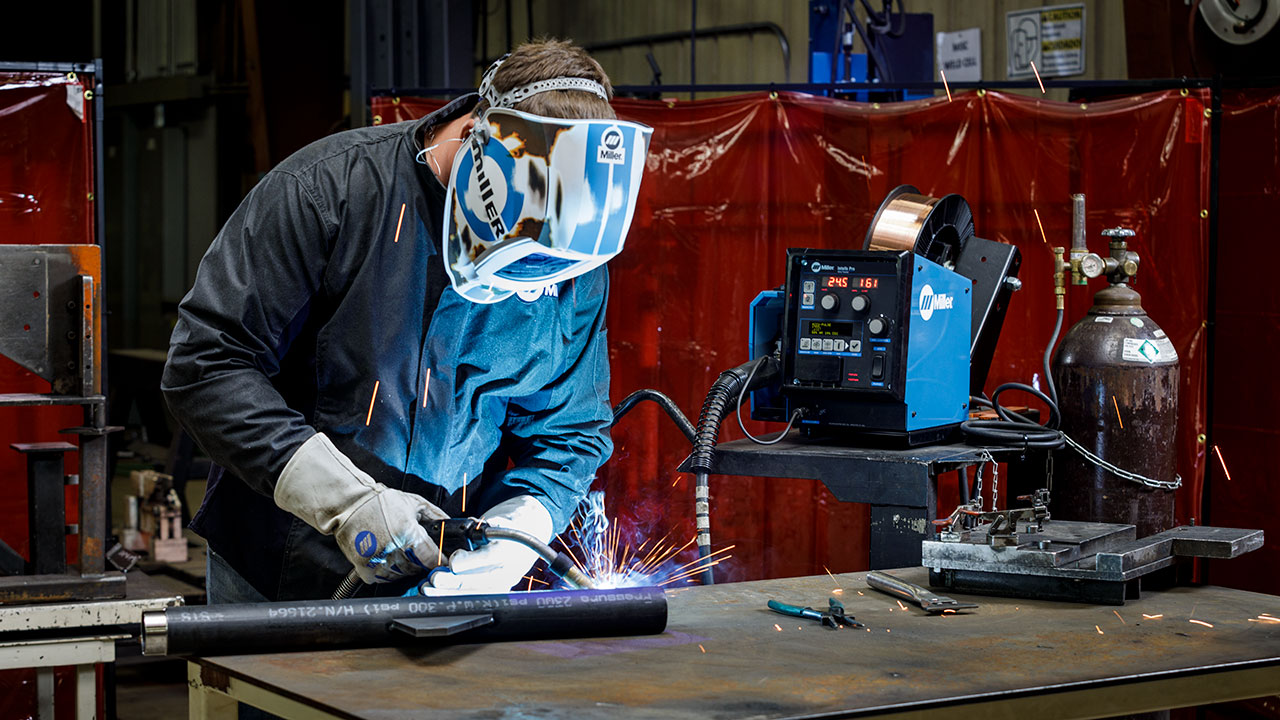Why a Welding WPS is Crucial: Enhancing Consistency and Compliance
Why a Welding WPS is Crucial: Enhancing Consistency and Compliance
Blog Article
Achieving Welding Excellence: Revealing the Keys of WPS Implementation and Optimization
In the world of welding, attaining quality is a quest that hinges on the meticulous execution and optimization of Welding Procedure Specifications (WPS) By diving into the key aspects, techniques, challenges, and best practices associated with WPS, a globe of welding quality waits for those who are willing to explore its midsts.
Significance of WPS in Welding
The Value of Welding Treatment Requirements (WPS) in the welding sector can not be overemphasized, working as the backbone for guaranteeing consistency, high quality, and safety in welding procedures. A WPS provides in-depth instructions on just how welding is to be executed, consisting of important variables such as products, welding processes, joint style, filler steels, preheat and interpass temperatures, welding currents, voltages, traveling speeds, and more. By sticking to a distinct WPS, welders can preserve uniformity in their job, causing constant weld quality throughout different projects.

Trick Aspects of WPS
Talking about the essential parts of a welding treatment spec (WPS) is necessary for comprehending its function in welding operations. One crucial facet of a WPS is the welding procedure spec, which describes the specific welding processes to be made use of, such as gas tungsten arc welding (GTAW) or secured metal arc welding (SMAW) By integrating these vital aspects right into the WPS, welding treatments can be standard, ensuring top quality, effectiveness, and safety in welding procedures.
Methods for WPS Optimization

Secondly, training and certification of welding employees according to the specific demands of the WPS is extremely important. Providing comprehensive training programs and making certain that welders are accredited to implement procedures described in the WPS can result in greater top quality welds and reduced rework.
Additionally, leveraging innovation such as welding software application and surveillance systems can assist in maximizing WPS. These devices can help in monitoring variables, guaranteeing criteria are within defined limits, and supplying real-time feedback to welders, allowing them to make prompt adjustments for boosted weld quality.
Common Challenges and Solutions
Facing challenges in executing the methods for WPS optimization can hinder welding operations' efficiency and quality. One typical obstacle is poor training or understanding of the welding procedure specifications (WPS) among the welding team. This can lead to improper execution of welds, resulting in defects and rework. To address this, comprehensive training programs should be implemented to ensure that all welders excel in interpreting and using WPS precisely.
An additional difficulty is the lack of proper documents and record-keeping, which is necessary for WPS optimization. Without clear records of welding parameters, products utilized, and inspection outcomes, it ends up being challenging to recognize areas for renovation and make sure consistency in welding procedures. Carrying out a robust documents system, such as digital welding monitoring software application, can help enhance record-keeping and facilitate data analysis for continual renovation.
Furthermore, inconsistent welding equipment calibration and upkeep can posture a considerable Get More Information challenge to WPS optimization. Normal tools checks, calibration, and maintenance timetables should be complied with strictly to make certain that welding parameters are properly controlled and preserved within the specified tolerances (welding WPS). By resolving these typical obstacles with proactive remedies, welding procedures can enhance performance, quality, and general welding quality
Best Practices for WPS Application
To ensure successful WPS execution in welding procedures, adherence to industry requirements and thorough attention to detail are extremely important. When starting WPS execution, it is essential to begin by extensively understanding the certain welding requirements of the job. This involves a thorough testimonial of the welding index treatment specifications, materials to be bonded, and the ecological problems in which the welding will occur.
When the demands are clear, the next action is to pick the suitable welding procedure that lines up with these specifications. This involves seeking advice from the appropriate codes and criteria, such as those given by the American Welding Culture (AWS) or the International Organization for Standardization (ISO), to guarantee conformity and top quality.
In addition, documenting the entire WPS implementation process is important for traceability and quality assurance. Detailed documents ought to be maintained relating to welding criteria, product prep work, preheat and interpass temperatures, welding consumables utilized, and any type of variances from the original treatment. Regular audits and reviews of the WPS can help identify areas for enhancement and ensure recurring optimization of the welding procedure.


Final Thought
In verdict, the implementation and optimization of Welding Treatment Requirements (WPS) is important for accomplishing welding quality. By recognizing the crucial elements of WPS, carrying out effective methods for optimization, addressing typical challenges, and complying with best methods, welders can ensure high-quality welds and risk-free working problems. It is essential for professionals in the welding industry to prioritize the appropriate application of WPS to enhance general welding efficiency and achieve preferred end results.
The Significance of Welding Treatment Specifications (WPS) in the welding market can not be overemphasized, serving as the backbone for making certain consistency, high quality, and safety and security in welding procedures. A WPS offers in-depth guidelines on how welding is to be brought Web Site out, consisting of essential variables such as materials, welding procedures, joint layout, filler steels, interpass and preheat temperature levels, welding currents, voltages, travel speeds, and much more. One important element of a WPS is the welding process specification, which describes the certain welding procedures to be used, such as gas tungsten arc welding (GTAW) or shielded metal arc welding (SMAW) By integrating these crucial aspects into the WPS, welding treatments can be standard, making certain top quality, efficiency, and safety in welding operations.
It is crucial for specialists in the welding sector to focus on the correct execution of WPS to boost total welding performance and attain wanted results.
Report this page